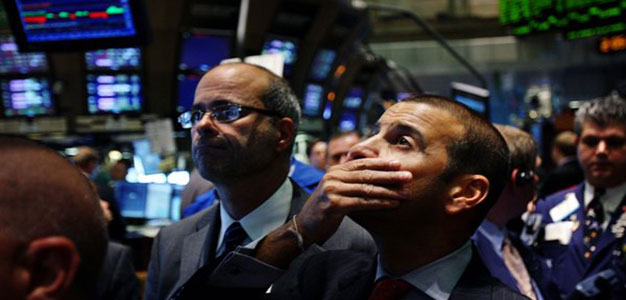
by David Stockman Interviewed by International Man at Lew Rockwell
International Man: Whether we like it or not, the reality is, the Federal Reserve has an enormous influence over the dollar and the stock market.
And right now, the Fed has an urgent and fateful decision to make.
It can keep printing trillions of dollars, let inflation skyrocket or tighten monetary policy, and watch the stock market crash.
In other words, it can sacrifice the stock market or the dollar.
David, what do you think the Fed will do, and what are the implications?
David Stockman: Well, I think whether it wants to or not, the Fed will crash the stock market. The Fed has painted itself into a hellacious corner because it’s made such a fetish out of its 2% inflation target, especially since January 2012, when it officially adopted this quantitative target.
In fact, most of the massive money printing, which has occurred since 2012, when the economy was pretty much recovered from the Great Recession anyway, has been justified by an inflation shortfall, which wasn’t true, but that was the justification.
They were trying to raise inflation and therefore felt that they could keep quantitative easing at these huge rates, including $120 billion per month, until recently. And as a result, we’re now in a world in which inflation is heading towards double digits.
I think they’re going to have no choice but to throw on the brakes much harder than the market is expecting, much harder than they would like to do, or maybe even intend at the moment, but there’s no choice.
Now, when you have double-digit inflation, number one and second, you’re going into what’s going to be a nasty election season in which the Republicans will finally see hope for their salvation in a horrendous battle on the inflation front blaming the Democrats and Biden.
That means the Fed will not be in a position over the next 2, 3, 4 quarters to retreat on the inflation battle. Whether it wants to or not, it will have to raise interest rates far more than is expected now.
It’s going to begin QT, quantitative tightening, or draining its $9 trillion balance sheet faster than it is talking about at the moment or what the market expects. That’s because it’s not going to be able to justify or maintain any credibility when inflation is running at the CPI level at nearly 10%.
So that’s a new ballgame.
We haven’t been in these kinds of uncharted waters for a long time, not since the 1970s, and even in the 1970s, the story was far different than it is today. So, the market will struggle with a Fed that turns out not to be their friend. It’s going to time and time again, think that the worst is over, buy the dip and make a lot of money, only to be disappointed.
I point out one final kind of analogy here.
If you go back to March 2000, when the dot-com bubble collapsed, the NASDAQ peaked at 4600, and the market dropped by 30% in the next 15 days. And after that bone-rattling drop people said it’s all over. The worst has happened, and you should buy the dip. You’re going to make a lot of money.
And over the next two years, they kept buying the dip, but over the next two years, the NASDAQ went from 4,600 to 3,300, all the way down to 800. An 80% plus decline and all that dip buying resulted in massive losses and pain.
I think we’re going to go through the same thing again.
International Man: Suppose the Fed does raise rates aggressively in the months ahead. What are the chances that they will capitulate and reverse course as soon as Wall Street starts screaming about it?
David Stockman: Well, that’s what people expect,…
Continue Reading